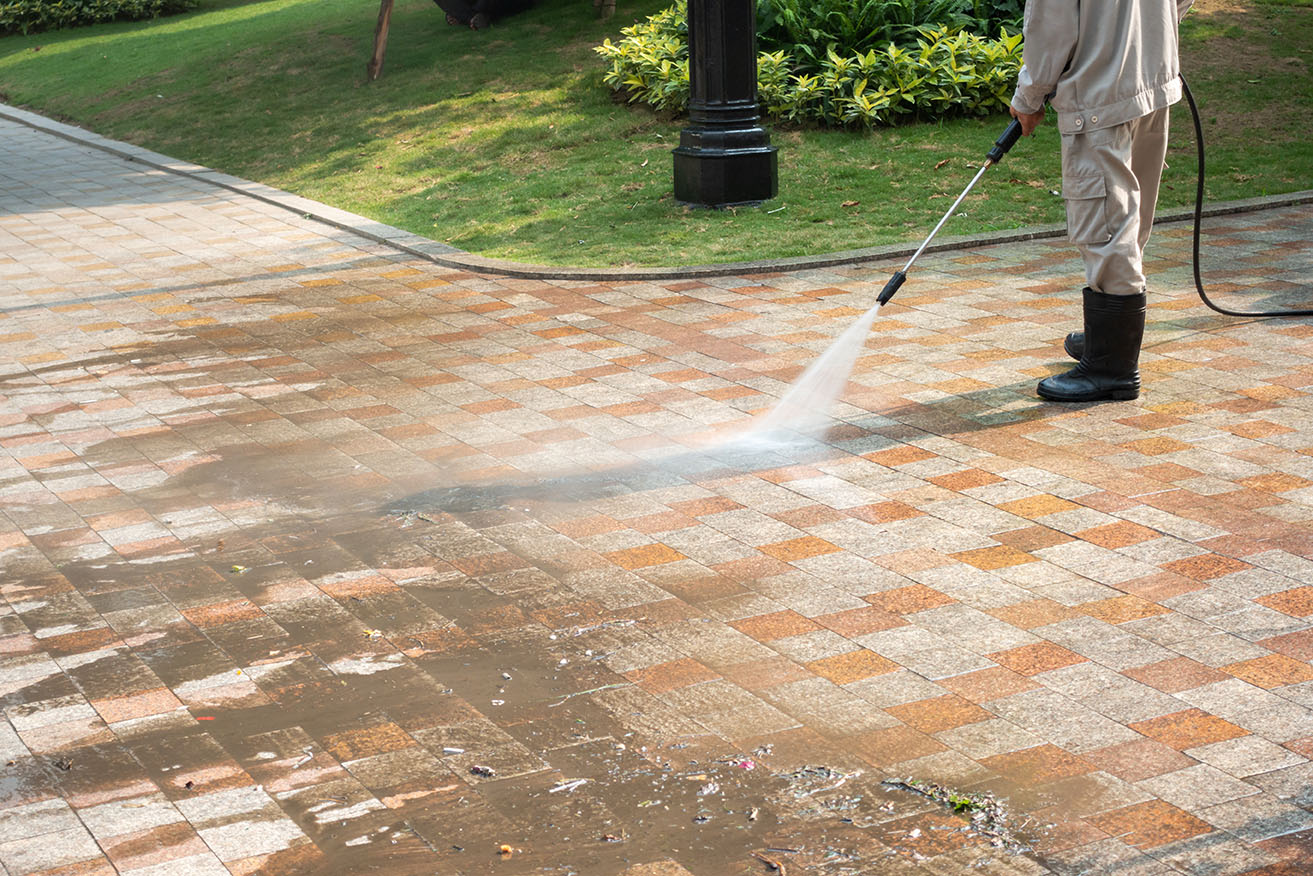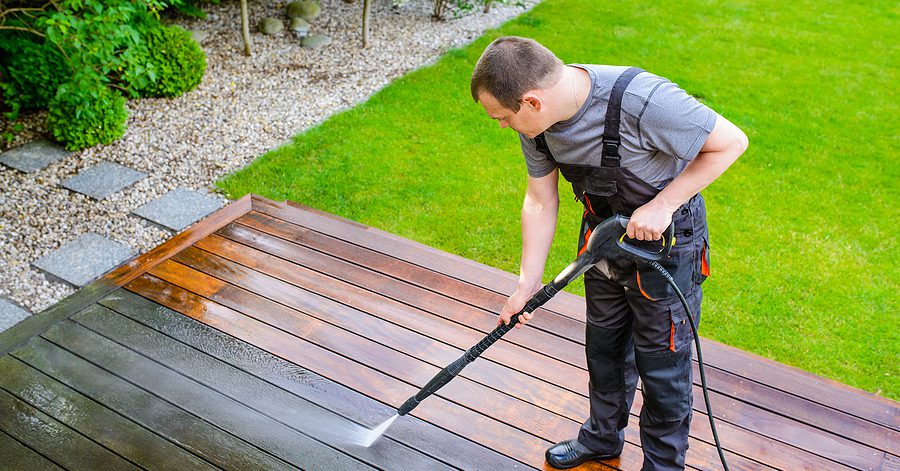Why Homeowners Count On Pressure Washing Lockhart for Sparkling Clean Exteriors
Why Homeowners Count On Pressure Washing Lockhart for Sparkling Clean Exteriors
Blog Article
Transform Your Home: Exactly How Pressure Washing Can Make a Difference
Pressure cleaning has actually arised as an important device for property maintenance, offering an effective service to enhance both visual appeals and longevity. By targeting dirt, mold, and other unsightly impurities, this approach not just freshens surface areas yet likewise plays a critical role in preventing long-term damage. Understanding the specific advantages and applications of pressure cleaning can substantially affect your home's value. The real extent of its benefits usually continues to be underestimated-- discovering the optimum strategies and tools can elevate your maintenance strategy to a new degree. What elements should you take into consideration to optimize the efficiency of this transformative process?
Advantages of Pressure Washing
Stress cleaning deals various advantages for building maintenance that can substantially boost both aesthetic allure and structural stability. Among the main benefits is the elimination of dirt, gunk, mold and mildew, and mold that gather on surfaces with time. This not only renews the appearance of outdoor patios, driveways, and structures but also helps protect against potential wear and tear that can develop from long term direct exposure to these impurities.
Moreover, regular pressure cleaning can extend the lifespan of surfaces, such as home siding, decks, and concrete, by eliminating unsafe materials that might trigger damage (Pressure Washing Lockhart). This upkeep method can cause considerable cost savings over time, as homeowner may avoid costly repairs or substitutes related to forget
In enhancement to enhancing aesthetic allure and securing structural components, stress cleaning can likewise boost safety. For circumstances, eliminating slippery algae or moss from sidewalks can substantially decrease the threat of drops and slips. It prepares surfaces for paint or staining, making certain much better adhesion and an extra long lasting finish. Overall, stress washing is a reliable approach for preserving the value and integrity of any type of residential or commercial property.
Locations A Lot Of Impacted
Regularly, certain locations of a residential or commercial property are extra vulnerable to the destructive effects of mildew, mold and mildew, and dust, making them prime prospects for pressure washing. Among one of the most damaged areas is the outside siding, where wetness can accumulate and promote the development of mold and mildew and algae. This not just detracts from the aesthetic charm but can also bring about architectural damage with time.
Driveways and pathways are one more critical emphasis. These surface areas typically collect dirt, oil spots, and various other debris that can create an unsafe danger, especially when damp. Normal pressure washing can restore their safety and look.

Additionally, decks and patios commonly experience hefty foot web traffic, causing the build-up of crud and organic material. If left unattended., this can result in unpleasant stains and possible health and wellness dangers.
Roofing systems, too, can experience the build-up of moss and algae, which can endanger their stability and lifespan.
The Stress Washing Process
Recognizing the areas most influenced by dust and mildew establishes the phase for an efficient pressure cleaning process. The primary step entails a detailed evaluation of the residential property to determine surfaces that require focus, such as driveways, outdoor patios, decks, and house siding. Each surface may have one-of-a-kind cleansing requires based on the kind of material and the level of grime buildup.

After a short dwell time, the stress washing can begin. Making use of a controlled and consistent strategy, the operator ought to preserve an ideal distance from the surface area to avoid damages. Washing the area extensively is vital to get rid of all residues. Following this, checking the cleaned up surface areas makes certain that any type of remaining spots are attended to, making certain an excellent finish. This systematic technique to pressure cleaning not only improves the building's look but likewise adds to its durability and worth.
Selecting the Right Devices
Selecting the proper equipment is crucial for attaining ideal cause pressure cleaning. The option of pressure washing machine-- electrical or gas-- depends on the scale of the work. Electric models are usually quieter and suitable for smaller jobs like cleansing automobiles or patios, while gas-powered systems provide higher stress, making them suitable for larger locations or harder spots.
In addition, the stress washer's PSI (pounds per square inch) score plays an essential role in determining its performance. For the majority of property applications, a PSI of 1,500 to 3,000 suffices, whereas industrial tasks may require units with PSI rankings exceeding 3,000.
Furthermore, think about the GPM (gallons per minute) rating, which suggests the water circulation rate. A higher GPM can improve cleaning up effectiveness by covering bigger locations faster.
Selecting the right nozzles is just as essential; different colors represent varying spray angles, enabling you to adjust stress based on the surface being cleaned.
Maintenance Tips After Cleaning

For surfaces, examine the areas that were washed for any kind of continuing to be dirt or stains. In many cases, a second pass with a reduced pressure setting may be essential to attain a clean surface. After washing, allow surface areas to dry completely prior to using any type of protective coatings, such from this source as sealers or paints, as wetness can result in improper bond.

Conclusion
In summary, stress cleaning serves as an efficient approach for boosting home appearances while all at once avoiding lasting damage to surfaces. Routine upkeep with pressure cleaning not only prolongs the lifespan of numerous exterior elements however additionally adds to overall home value.
Stress washing deals numerous benefits for home maintenance that can substantially improve both visual allure and structural honesty.Regularly, particular areas of a residential or commercial property are much more at risk to the damaging effects of dust, mold, and mold and mildew, making them prime prospects for stress washing.After finishing a pressure cleaning session, it is essential look here to carry out upkeep on both the tools and the surface areas you have actually cleaned to guarantee longevity and ideal performance.In recap, pressure cleaning offers as an efficient technique for enhancing home visual appeals while at the same time avoiding lasting damage to surface areas. Regular maintenance with stress cleaning not only prolongs the lifespan of numerous outside elements yet likewise adds to overall residential property worth.
Report this page